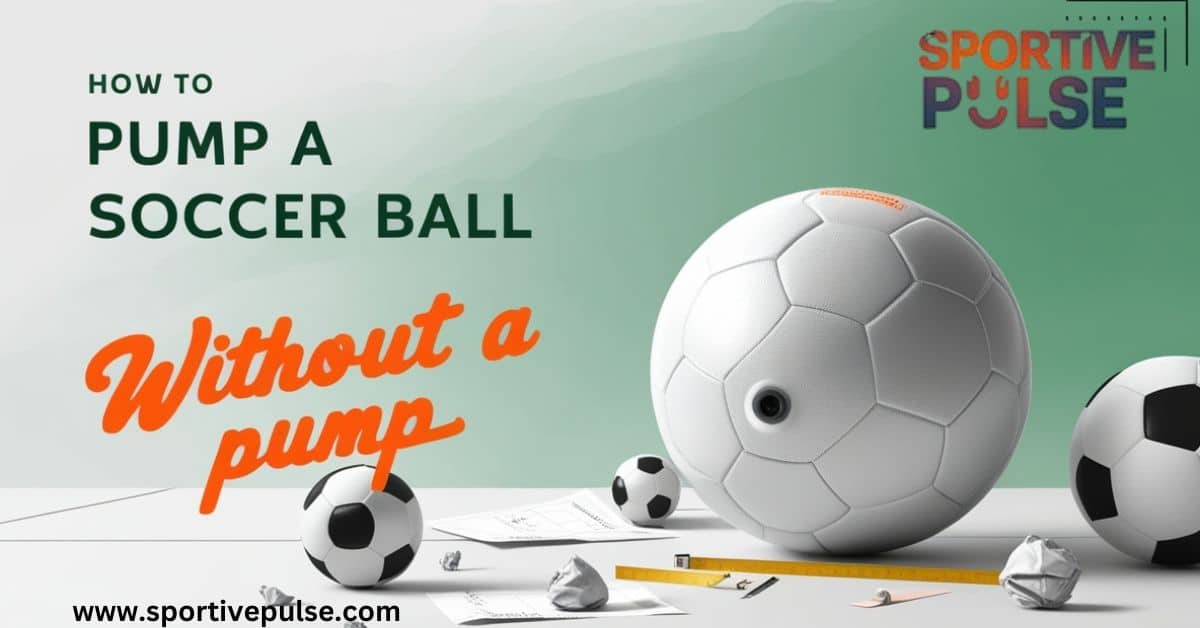Ever found yourself with a deflated soccer ball and no pump in sight? Don’t let the air out of your game! This comprehensive guide will walk you through creative and effective ways to pump a soccer ball using everyday items and alternative methods. . soccer ball is a round object used to play soccer. It is made of synthetic materials and filled with air. The ball needs proper inflation for the best performance. You can kick, pass, or dribble it during a game.
No pump? No problem! Don’t let a flat soccer ball ruin your game. You can still inflate your ball using everyday items. Curious about how? Let’s explore creative ways to pump your soccer ball without needing a pump. Stay prepared and keep the game going!
Pumping a soccer ball without a pump is easier than you think. You can use a compressed air can to fill the ball with air. Another option is to blow into the valve using a straw or balloon. If you have a bike pump, you can also use that by creating a makeshift needle. Keep your soccer ball inflated and ready for action without needing a traditional pump!
The Science of Soccer Ball Pressure
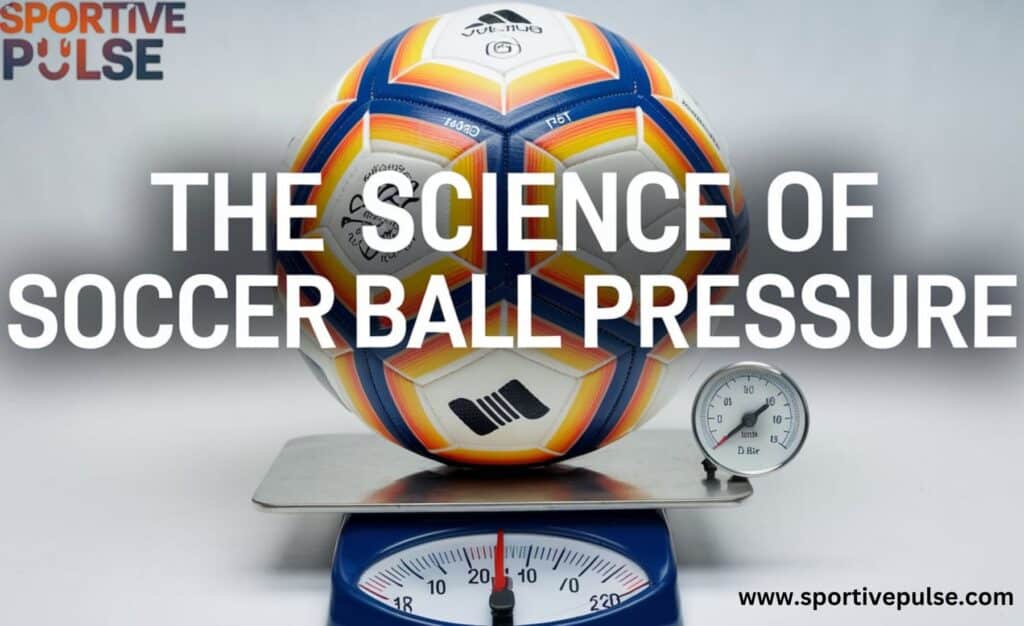
Before we dive into inflation techniques, let’s kick things off with some ball pressure basics. The air pressure for a soccer ball isn’t just about how bouncy it feels—it’s a crucial factor in the ball’s performance, player safety, and the overall quality of the game.
Why proper inflation matters:
- Consistent ball flight and trajectory
- Accurate passing and shooting
- Reduced risk of injury from heading an overinflated ball
- Extended lifespan of the ball
Interestingly, factors like temperature and altitude can affect ball pressure. A ball inflated at sea level might feel like a rock when you play in the mountains!
Finding the Sweet Spot: Ideal Soccer Ball Pressure
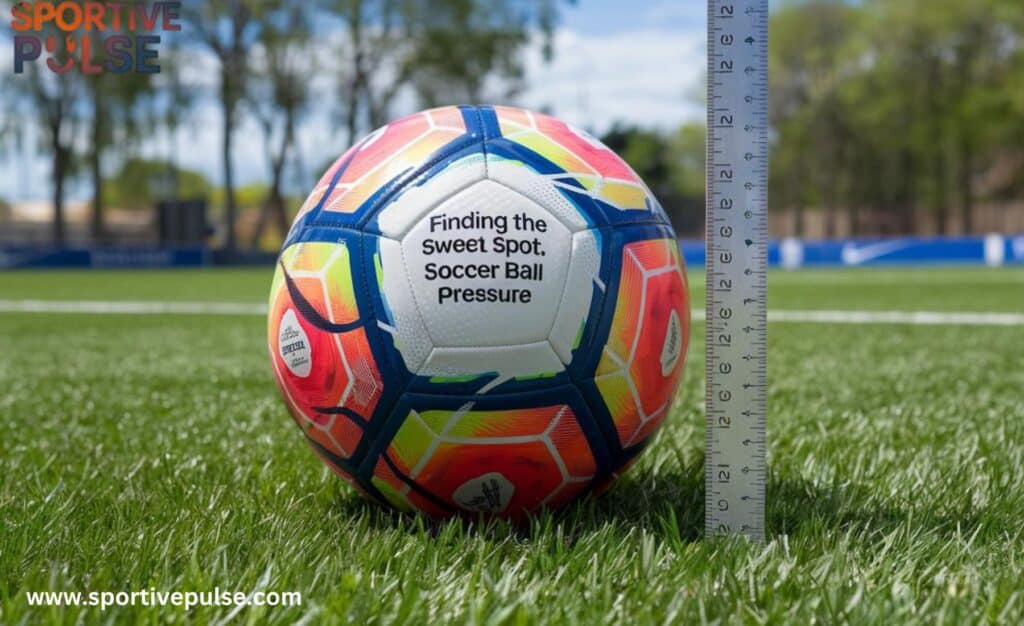
FIFA, the governing body of soccer, has strict regulations on ball pressure. For official matches, the air pressure for a soccer ball should be between 0.6 and 1.1 atmospheres (8.5 to 15.6 PSI) at sea level.
But how can you test pressure without a gauge? Try this quick test:
- Drop the ball from shoulder height.
- It should bounce back up to about waist level.
- If it bounces higher, it’s overinflated; lower, and it needs more air.
Pro tip: The “thumb test” isn’t reliable. A properly inflated ball should give only slightly when pressed with your thumb.
MacGyver-Style Inflation Techniques
The Balloon Transfer Method
This method is perfect when you need to inflate your balls quickly with household items.
You’ll need:
- A large balloon
- A straw
- Tape
Steps:
- Blow up the balloon as large as possible.
- Carefully fit the straw into the ball’s valve.
- Stretch the balloon’s neck over the other end of the straw.
- Squeeze the balloon to transfer air from a balloon to the ball.
- Repeat until the ball reaches desired firmness.
Pros:
- Uses readily available items
- No special skills required
Cons:
- Can be time-consuming
- May not achieve precise pressure
DIY Pump from Household Items
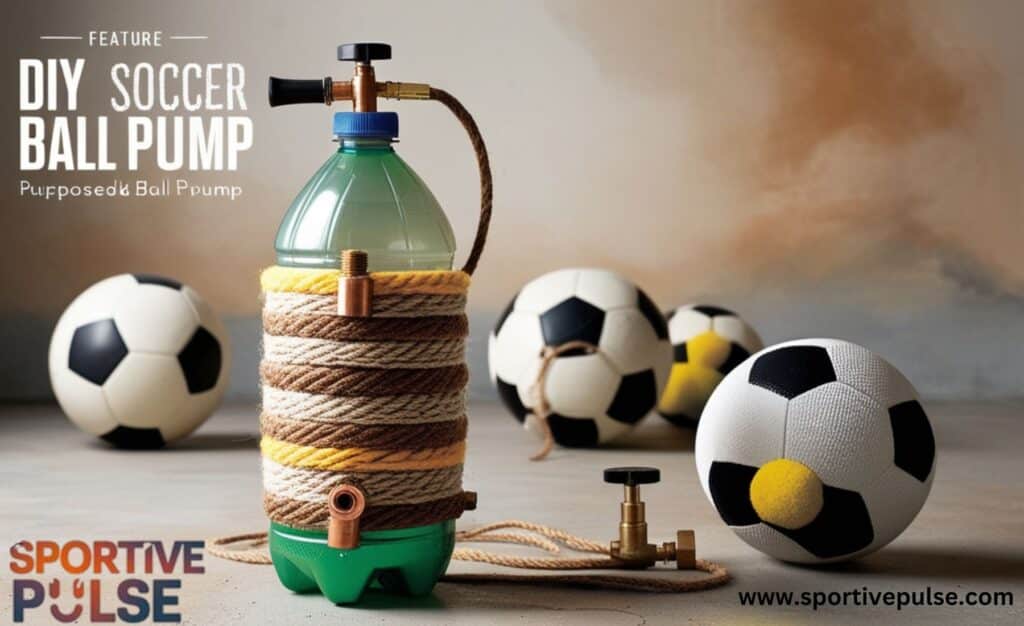
Time to channel your inner MacGyver! This method turns ordinary household items for inflation into a makeshift pump.
Materials needed:
- Pen (empty, with removable ink tube)
- Paperclip
- Scissors
- Tape
Assembly:
- Remove the ink tube from the pen.
- Straighten the paperclip and bend one end into a tiny hook.
- Insert the paperclip through the pen tube, hook end first.
- Tape around the valve end to create an airtight seal.
To use, insert the pen into the ball’s valve and pump the paperclip in and out. It’s not the fastest method, but it’ll get the job done in a pinch!
Safety first: Be careful with sharp edges on the paperclip.
Compressed Air Canisters: The Portable Solution
For a quick and easy inflation solution, nothing beats a compressed air canister. These portable powerhouses can pump a soccer ball in seconds.
Types of canisters:
- CO2 cartridges (common in bike repair kits)
- Aerosol air duster cans
Usage tips:
- Ensure the canister nozzle fits the ball valve snugly.
- Release air in short bursts to control pressure.
- Check ball firmness frequently to avoid over-inflation.
Environmental note: Opt for refillable canisters when possible to reduce waste.
Hitting the Road: Gas Station Air Pumps
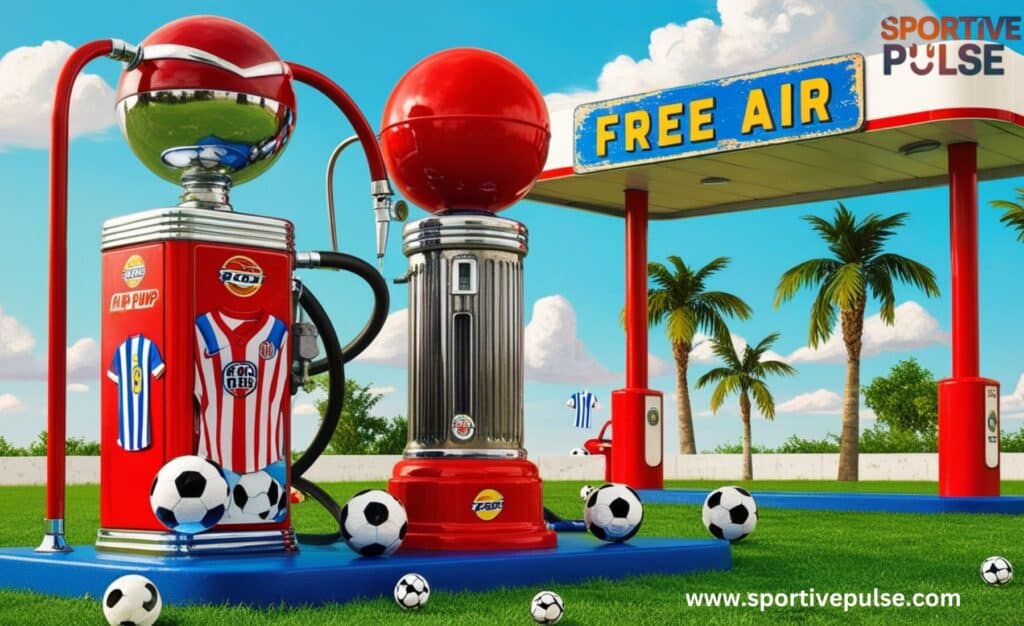
When you’re out and about, a gas station can be your soccer ball’s best friend. Most air pumps for car tires can easily pump a soccer ball with a little know-how.
Adapting car tire pumps:
- Look for a pump with a pressure gauge.
- Use the smallest nozzle attachment available.
- Press firmly to create a seal with the ball’s valve.
- Inflate in short bursts, checking pressure frequently.
Pressure control trick: Many digital pumps let you preset the desired PSI. Use this feature for perfect pressure every time!
Pedal Power: Bike Pump Hacks
Got a bike pump? You’re in luck! This common piece of gear can be an effective way to pump a soccer ball.
Finding the right adapter:
- Most bike pumps come with multiple valve attachments.
- Look for the smallest, needle-like adapter.
- If you don’t have one, craft a DIY adapter using a straw and tape.
Manual vs. electric bike pumps:
- Manual pumps offer more control but require effort.
- Electric pumps are faster but may risk over-inflation.
Emergency Inflation: On-the-Field Solutions
Sometimes you need air in a hurry. Here are some quick fixes for mid-game emergencies:
- The Breath of Life: In desperate times, you can inflate a ball using your own lung power. It’s not ideal, but it works in a pinch.
- Hygiene tip: Use a straw as a barrier between your mouth and the valve.
- Temporary Patches: For small leaks, try these quick fixes:
- Chewing gum (yes, really!) pressed into the leak
- A small piece of tape for tiny punctures
- Vaseline or lip balm rubbed over a slow leak
Remember, these are temporary solutions. Properly repair your ball as soon as possible!
The Art of Deflation: When Less is More
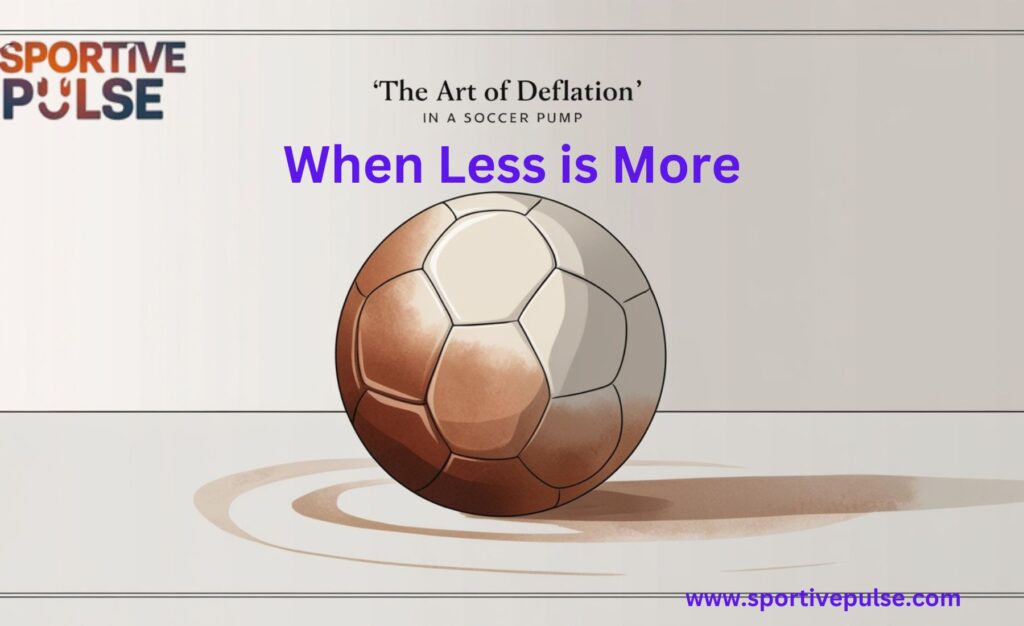
Sometimes you need to deflate a soccer ball, whether for storage or to adjust pressure. Here’s how to do it right:
Controlled deflation methods:
- Use a pump with a release valve for precise deflation.
- Insert a small, blunt object (like a skateboard truck) into the valve to release air slowly.
- For complete deflation, press the valve spring with a paperclip until all air is released.
Storing balls for longevity:
- Slightly deflate balls before long-term storage.
- Keep them in a cool, dry place away from direct sunlight.
- Avoid stacking heavy items on top of stored balls.
Tech Meets Tradition: Smart Ball Inflation
Welcome to the 21st century of soccer ball gear! New technologies are revolutionizing how we monitor and maintain ball pressure.
Smart ball innovations:
- Embedded sensors that relay pressure data to your smartphone
- QR codes on balls that link to inflation guides
- Automatic inflation systems for professional teams
App-solutely amazing: Some apps use your phone’s microphone to analyze the sound of a bouncing ball and estimate its pressure!
Beyond Inflation: Maintaining Your Soccer Ball
A well-maintained ball lasts longer and performs better. Here’s how to keep your soccer ball gear in top shape:
Cleaning tips:
- Wipe down with a damp cloth after each use.
- For tough dirt, use mild soap and warm water.
- Never soak the ball or use harsh chemicals.
Storage wisdom:
- Store in a ball bag to protect from scuffs and scratches.
- Rotate balls regularly if you have multiple.
- Avoid extreme temperatures which can affect air pressure and ball integrity.
When to replace your ball:
- Visible panel separation
- Persistent leaks despite repairs
- Loss of shape or significant scuffing
Pro Tips from the Pitch
Let’s hear from the experts! Here are some insights from professional players and equipment managers on ball care:
“I always check ball pressure before a match, even if it feels fine. It’s amazing how much difference a little air can make.” – Alex Morgan, USWNT Forward
Equipment manager’s secret: Many pros use a dab of silicon spray on the valve after inflation to prevent slow leaks.
Pre-game rituals for perfect ball prep:
- Check pressure 24 hours before game time.
- Adjust as needed and let the ball rest.
- Re-check just before kick-off.
Safety First: Avoiding Over-Inflation Hazards
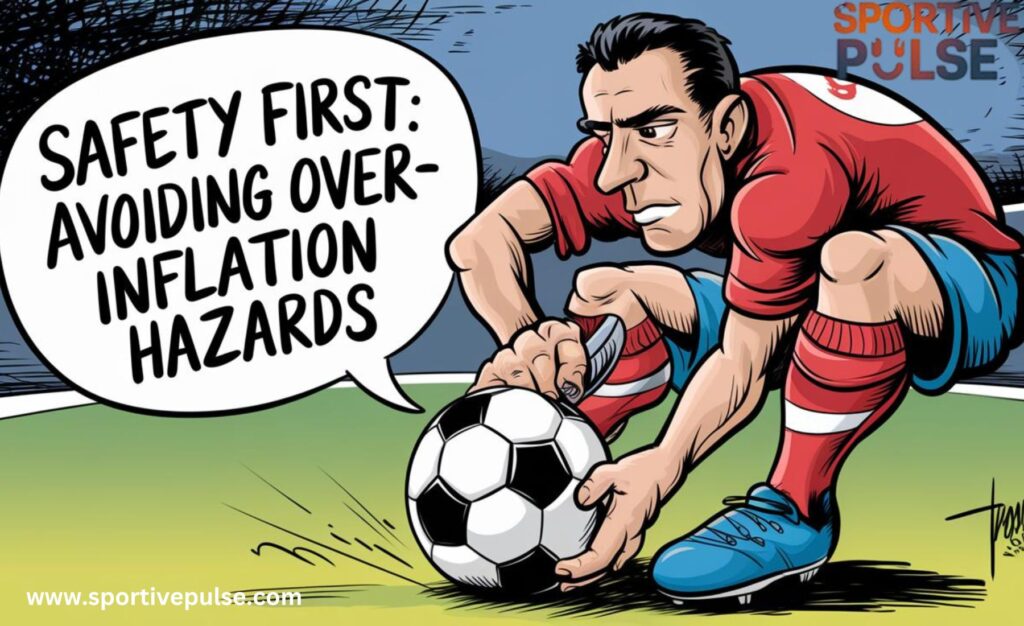
While we’re all eager to pump a soccer ball to perfection, over-inflation can be dangerous. Here’s what to watch out for:
Risks of excessive pressure:
- Increased risk of injury, especially from headers
- Unpredictable ball behavior
- Potential for the ball to burst
Signs your ball is ready to burst:
- Visible stretching or bulging of panels
- A drum-like tightness when tapped
- Difficulty in depressing the surface with your thumb
When in doubt, let a little air out. It’s better to have a slightly soft ball than an over-inflated one.
Conclusion: Keeping Your Game Pumped Up
From balloons to bike pumps, we’ve explored a world of creative solutions to pump a soccer ball without a traditional pump. Remember, proper inflation is key to both performance and safety on the pitch. Whether you’re using high-tech gear or MacGyver-ing a solution with household items, the goal is always the same: a perfectly inflated ball that’s ready for action.
So next time you’re faced with a deflated situation, don’t let it take the air out of your game. With these techniques in your arsenal, you’ll always be ready to play, no matter what challenges you face. Keep your balls inflated, your skills sharp, and your love for the beautiful game alive!
FAQs: Tackling Common Inflation Queries
Let’s address some frequently asked questions about soccer ball inflation:
Q: Can I use a basketball pump to inflate a soccer ball? A: Yes, but you’ll need a needle adapter. Most basketball pumps come with one.
Q: How often should I check my ball’s pressure? A: Check before each use, or at least weekly if you play regularly.
Q: Is it normal for a new ball to lose air quickly? A: New balls may need frequent inflation as the material stretches. This should stabilize after a few uses.
Q: Can extreme weather affect ball pressure? A: Absolutely! Cold weather can lower pressure, while heat can increase it. Always check and adjust accordingly.

“Amelia Morris, a seasoned sports enthusiast and writer, brings her passion for all things athletic to the forefront as an author on SportivePulse. With years of blogging experience under her belt, Amelia expertly crafts engaging content that delves into the world of sports, sharing in-depth analysis, compelling stories, and captivating insights. Her dedication to delivering top-notch sports coverage makes her a standout contributor on our platform.

